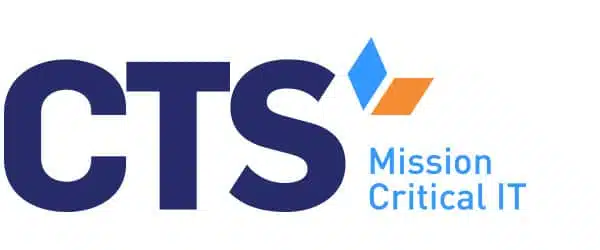Cyberattackers are going after schools, nonprofits, and mid-sized businesses that often lack the resources to keep up. Cybersecurity is much more than a technical concern; it’s an operational priority that can determine the resilience of your entire organization.
A regular cybersecurity audit helps identify vulnerabilities before attackers do. It’s not just a checkbox for compliance, it’s a necessary component of any solid security program. For IT managers and business leaders juggling strategic planning with day-to-day fire drills, audits offer structure, clarity, and a clear path to reducing risk.
What is a Cybersecurity Audit?
A cybersecurity audit is a systematic review of your organization’s IT systems, security controls, and processes. Its purpose is to evaluate how well your existing measures are protecting sensitive information and mitigating threats.
Unlike penetration testing, which simulates attacks, audits focus on controls, policies, and evidence of compliance. Think of it as a 360-degree inspection of your organization’s security posture. The audit results in a detailed report highlighting current strengths, weaknesses, and actionable recommendations.
Learn more: What is a Cybersecurity Strategy, and Why Do You Need One?
Why Regular Cybersecurity Audits Are So Important
One-time security checks aren’t enough. New threats emerge constantly, software environments change, and compliance standards evolve. A recurring audit process ensures that your defenses stay ahead of the curve.
Reasons to conduct regular cybersecurity audits include:
- Reducing risk of security breaches: Catching gaps before they’re exploited saves time, money, and your reputation.
- Meeting regulatory requirements: Laws like HIPAA, PCI-DSS, and FERPA require documentation and proof of ongoing risk management.
- Strengthening response plans: An audit surfaces flaws in your incident response plan that could hinder recovery during an actual cyberattack.
- Tracking progress: Regular audits help measure the effectiveness of your security measures over time.
Frequent audits also give leadership and the security team the insight needed to prioritize efforts. Instead of chasing every alert, your team can focus on reducing the likelihood and impact of a data breach.
Learn more: Top Cyber Threats Facing Your Organization in 2025
Types of Cybersecurity Audits: A Quick Comparison
| Audit Type | Purpose | Scope | Ideal For |
|---|---|---|---|
|
Internal Audit
|
Evaluate security controls and policies using internal staff
|
Often more limited, but faster and lower cost
|
Organizations with skilled in-house teams
|
|
External Audit
|
Independent third-party assessment for objectivity and credibility
|
Typically broader and more detailed
|
Regulatory compliance, due diligence efforts
|
|
Compliance Audit
|
Check alignment with specific regulatory requirements (e.g., HIPAA, FERPA)
|
Focused on mandated controls and documentation
|
Schools, nonprofits, healthcare, finance
|
|
Risk-Based Audit
|
Prioritize high-impact risks to the business
|
Dynamic—based on evolving threat landscape
|
Organizations managing multiple risk levels
|
|
Technical Audit
|
Inspect systems, configurations, and network vulnerabilities
|
Deep dive into tech stack and digital infrastructure
|
IT-heavy environments
|
|
Procedural Audit
|
Review policies, processes, and governance frameworks
|
Documentation-heavy; less technical
|
Organizations with formalized processes
|
Cybersecurity Audit Checklist: An Actionable Document
A well-structured cybersecurity audit checklist helps ensure no critical area is overlooked. Breaking it down into key focus areas allows IT managers and security leaders to assess systems systematically and thoroughly.
1. Assess Inventory and System Vulnerability
Understanding what you have is the foundation of knowing what to protect.
- Create a current inventory of all devices, servers, workstations, mobile devices, and IoT equipment
- Document all software applications, including versions and patch levels
- Identify all cloud-based services, platforms, and SaaS tools
- Highlight unsupported or outdated systems still in use
- Map data flow between critical systems and third-party platforms
2. Access Controls
Who has access—and how they access it—is one of the top drivers of both security and compliance risks.
- Review all user accounts and group permissions across systems
- Identify and disable inactive or orphaned accounts
- Confirm enforcement of multi-factor authentication (MFA) for all users
- Audit administrative-level access to ensure it’s restricted to authorized personnel
- Validate role-based access policies and least privilege principles
3. Network Security and Infrastructure
The infrastructure that connects your systems needs to be continuously validated against changing cyber threats.
- Review firewall configurations and update access rules as needed
- Scan for open ports and unnecessary services on critical servers
- Assess VPN configuration and enforce encrypted remote access
- Test intrusion detection/prevention systems (IDS/IPS) for effectiveness
- Evaluate segmentation between internal and external networks
4. Endpoint and Device Security
Devices, including BYOD endpoints, are often the front lines of cyber threats.
- Confirm that antivirus/EDR tools are deployed and actively monitoring
- Ensure automatic patching is enabled and current
- Scan endpoints for unauthorized or non-compliant software
- Audit device encryption and physical theft protections
- Validate mobile device management (MDM) policies
5. Policies, Procedures, and Response Plans
Written controls are just as important as technical ones—especially for compliance.
- Review existing security policies and identify gaps
- Update the incident response plan and test for effectiveness
- Ensure policies for acceptable use, BYOD, and third-party access are up to date
- Document and review backup and disaster recovery procedures
- Confirm data retention and destruction policies are enforced
6. Vendors and Third-Party Risk
Partners and vendors with network access must follow the same rigorous standards as internal teams.
- Maintain a list of all vendors with access to systems or data
- Evaluate vendor security posture and obtain updated SOC reports or assessments
- Ensure proper segmentation and monitoring of third-party access
- Review contracts and SLAs for cybersecurity clauses and breach notification protocols
7. Compliance and Regulatory Alignment
Meeting industry standards is critical for organizations in healthcare, education, and nonprofit sectors.
- Verify alignment with regulatory frameworks (e.g., HIPAA, FERPA, PCI-DSS)
- Collect evidence of compliance controls for external auditors
- Conduct periodic compliance audits to stay current with changing requirements
- Monitor changes in legislation or mandates relevant to your industry
8. Shadow IT and Unauthorized Tools
Unapproved software and services are one of the biggest blind spots for modern IT environments.
- Identify all devices and applications not deployed through approved channels
- Monitor network traffic for signs of unknown tools or cloud services
- Educate users about risks associated with unsanctioned tools
- Implement detection tools that alert IT teams to unauthorized usage
Learn more: Cybersecurity Tips for Nonprofits: Stay Safe and Spend Less
Conducting a Cybersecurity Audit: What’s the Right Approach?
Organizations have options when it comes to executing cybersecurity audits. The right approach depends on internal expertise, risk tolerance, regulatory exposure, and budget.
1. In-House Audit
Handled entirely by your internal IT or security team, this option works best for organizations with mature IT practices and available bandwidth.
Pros:
- Full control over scope and scheduling
- Cost-effective if internal resources are already in place
- Faster execution for familiar environments
Cons:
- Potential for bias or oversight
- Time-consuming for already stretched teams
- Limited expertise in specialized frameworks or compliance standards
2. Third-Party Audit
A professional external firm or managed service provider conducts the audit using proven methodologies and frameworks.
Pros:
- Objective, unbiased perspective
- Access to audit tools and current best practices
- Stronger credibility for compliance and board reporting
Cons:
- Higher up-front costs
- May require internal resources to assist with coordination
- Scope might be more rigid depending on provider
3. Hybrid Approach
A mix of internal preparation and external validation. Internal teams perform preliminary assessments, and external auditors handle final review and compliance alignment.
Pros:
- Balances cost control and expert validation
- Improves internal knowledge while meeting regulatory needs
- Allows ongoing internal monitoring between formal audits
Cons:
- Requires strong collaboration between teams
- Risk of misalignment if roles aren’t clearly defined
Cost Considerations:
Understanding the cost of cybersecurity audits means assessing the context, value, and risk mitigation.
Typical Cost Factors
- Scope and size of your environment (number of endpoints, cloud platforms, locations)
- Compliance requirements (HIPAA or PCI audits are more complex and resource-intensive)
- Audit method (in-house vs. external)
- Audit tools and technologies (vulnerability scanners, SIEM logs, asset tracking platforms)
Rough Cost Breakdown
- In-house audits: Low out-of-pocket but high time investment
- External audits: $5,000–$50,000+ depending on scope, industry, and audit depth
- Hybrid approach: Moderate cost, better value balance
Cost vs Consequence
According to IBM, the average cost of a data breach for US organizations in 2024 was $4.88m in recovery, fines, and downtime. Investing in routine audits can prevent such disastrous fallouts, as well as larger operational disruptions and reputation damage.
Next Steps: Ready to See Where You Stand?
Cybersecurity audits are a strategic safeguard. With threats growing in frequency, compliance expectations rising, and IT environments becoming more complex, regular audits give organizations the visibility and control they need to protect what matters.
A cybersecurity audit doesn’t have to be complicated or expensive—but it does need to be done. CTS works with schools, nonprofits, and commercial clients to provide clear, actionable audits that align with your goals and compliance needs.
Use our cybersecurity audit checklist to get started, or connect with our team to get a free cybersecurity assessment.




